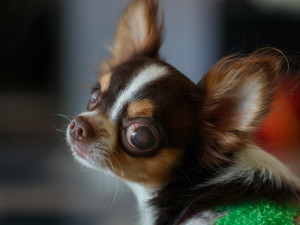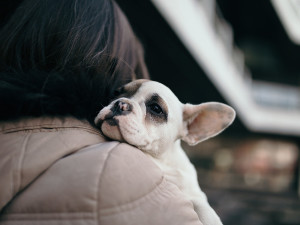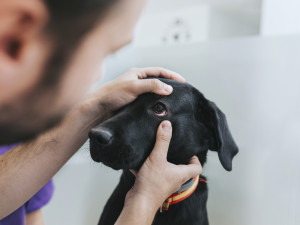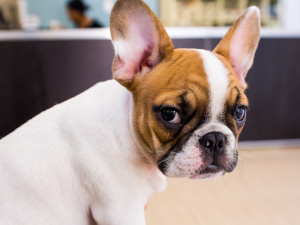Dogs Get Dry Eye Too...Some Breeds More Than Others
Eyes without tears are only for Cameron Diaz in The Holiday.
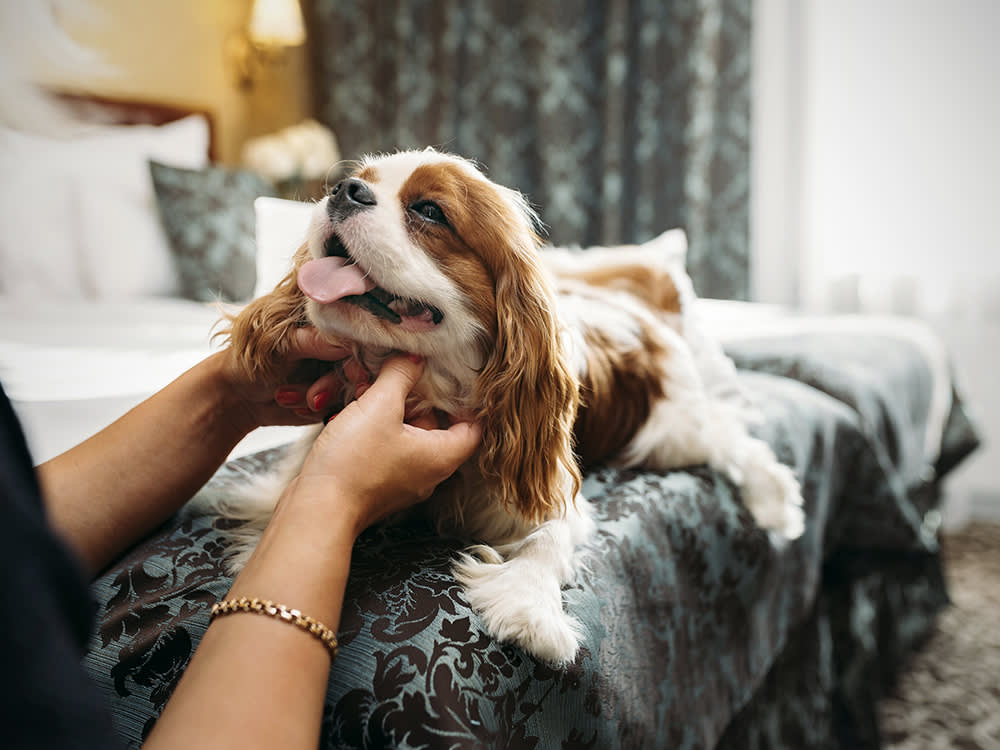
share article

Your pet wants you to read our newsletter. (Then give them a treat.)
Humans with dry eye have probably been confronted with far too many eye-drop recommendations, commercials that list countless alarming side-effects, and eye doctors getting far too close to them with an incredibly bright light.
Your dog might not be happy to learn this, but they are also susceptible to dry eye (thankfully without all the pharmaceutical commercials). Take my client Chelsea, for example.
Chelsea is a five-year-old Cavalier King Charles Spaniel. At her appointment, she peered suspiciously at me through half-open eyelids as her family described the goopy eye discharge that went away with topical medication but returned as soon as they stop applying it. Chelsea was not interested in playing ball as much as before and spent most of her time curled up in her bed snoozing — behavior hardly expected from a champion ball-catcher.
I took a closer look at her eyes with my slit lamp and saw thin blood vessels growing within what should be crystal-clear corneas. Instead, they were a hazy gray, and the conjunctiva — the mucous membrane that covers the exposed portion of the eyeball and lines the inside of her eyelids — was red and puffy. I used special little paper strips divided into millimeter increments to measure Chelsea’s tear production and found that she has less than a third of what she should have. I then applied a topical stain that coats her cornea in a rough and patchy pattern. The combination of Chelsea’s clinical history, her eye exam, and the test results gave me a diagnosis: keratoconjunctivitis sicca.
What is keratoconjuctivitis sicca? KCS, also known as “dry eye,” is a chronic inflammatory condition in dogs where not enough tears are produced to keep the eyes properly lubricated. KCS is just one canine eye disorderopens in a new tab that can affect the precorneal tear film, (PTF) which keeps the cornea and surrounding eye tissues healthy. The function of the PTF is to provide oxygen and nutrition to the eye tissues and carry away debris from the surface of the eye.
Causes Of Dry Eye In Dogs
Much of the time, dry eye is caused by an immune-mediated problem that creates inflammation within the tear glands and reduces the amount or quality of the tears they produce. Dry eye can also be caused by another medical condition known as cherry eye in dogsopens in a new tab, which, left untreated, can reduce tear production. Some drug interactions and systemic health conditions, such as hypothyroidismopens in a new tab, may also affect the tear film. Hypothyroidism can also cause damage to the nerves that stimulate these glands to work properly. Additionally, the movement of the eyelids spreads the tear film across the cornea, so a dog’s inability to fully blink can also affect eye health.
Any dog can develop dry eye, but some dog breeds are predisposed to KCSopens in a new tab. Shih Tzus, Lhasa Apsos, and Pugs top the list in my practice, but dry eye is also common in English Bulldogs, Westies, Cocker Spaniels, Yorkies, Pekinese, Boston Terriers and Cavaliers, like my new friend Chelsea. The brachycephalicopens in a new tab (squished-faced) breeds often have big buggy eyes that are more exposed to the world, so they need even better tear production and quality than a breed with deeper-set eyes, such as a Standard Poodle or Collie.
Symptoms Of Dry Eye In Dogs
What happens when your dog has dry eye and they don’t produce enough tears?
Red and irritated eyes
Noticeable discomfortopens in a new tab or pain in the dog’s eye
Excessive squinting or blinking
Reduced tear production
Attempts to keep their eyes shut
Thick goopy discharge
A sticky, goopy eye discharge known as mucoid ocular discharge is often the most common sign of dry eye in dogs. With dry eye, dogs can develop irritated red eyes that are painful and susceptible to bacterial infections and corneal ulcerations. Superficial corneal ulcerations can rapidly turn into deep ones that need surgical treatment to save the eye. If KCS is left untreated, the cornea will often become cloudy, with scarring over the surface and blood vessels growing across it. The corneal surface can even pigment and become so opaque that it obstructs vision.
Treatment for Dry Eye in Dogs
Fortunately, there are medications available to control the immune-mediatedopens in a new tab inflammation within the tear glands. Notice I said control, not cure. By suppressing the inflammation in the tear glands, the medication allows your dog to produce more of their own tears. There is no “cure” for dry eye in dogs, but you can manage it.
The most important factors in treating KCS are consistently applying the medications as prescribed and following up with your veterinarian to determine if the treatment plan is working as expected. Don’t give up if you don’t see instant improvement; it may take several weeks of consistent application of medication before you see a difference.
Chances are your dog will respond to medication relatively quickly. Don’t stop, reduce, or change the medication until you follow up with your veterinarian. Your dog will look better because you’re treating the dry eye, not because the KCS is cured. Stopping the medication allows the inflammation to recur, and you’ll have to start all over again. Keep repeating this cycle, and your pup’s little tear glands may scar to the point where they can’t produce the tears needed even with treatment.
As for Chelsea, she went home with medication, and I received a call a couple of weeks later reporting that she was back to her energetic, ball-playing self.
That’s news that keeps me happy!

Rebecca Burwell, DVM
Rebecca Burwell, DVM, DACVO, practices with Eye Care for Animals in Santa Rosa and Corte Madera, Calif.
Related articles
![French bulldog puppy looking scared at vet]() opens in a new tab
opens in a new tab10 Things to Ask at Your First Vet Visit
There are no stupid questions — well, when it comes to your dog’s health.
![Black puppy itches behind her ear due to flea allergy]() opens in a new tab
opens in a new tabShoo, Flea: What to Do About Your Dog’s Disturbing Flea Allergy
Before you say “ewww” Moira Rose-style, learn these steps to prevent and remove fleas.
![Jack Russel Terrier mixed breed dog laying on his back on a white and gray rug getting his belly rubbed by his owner]() opens in a new tab
opens in a new tabHow to Do a DIY Dog Checkup in 7 Steps
You can do a DIY exam on your dog from your couch.
